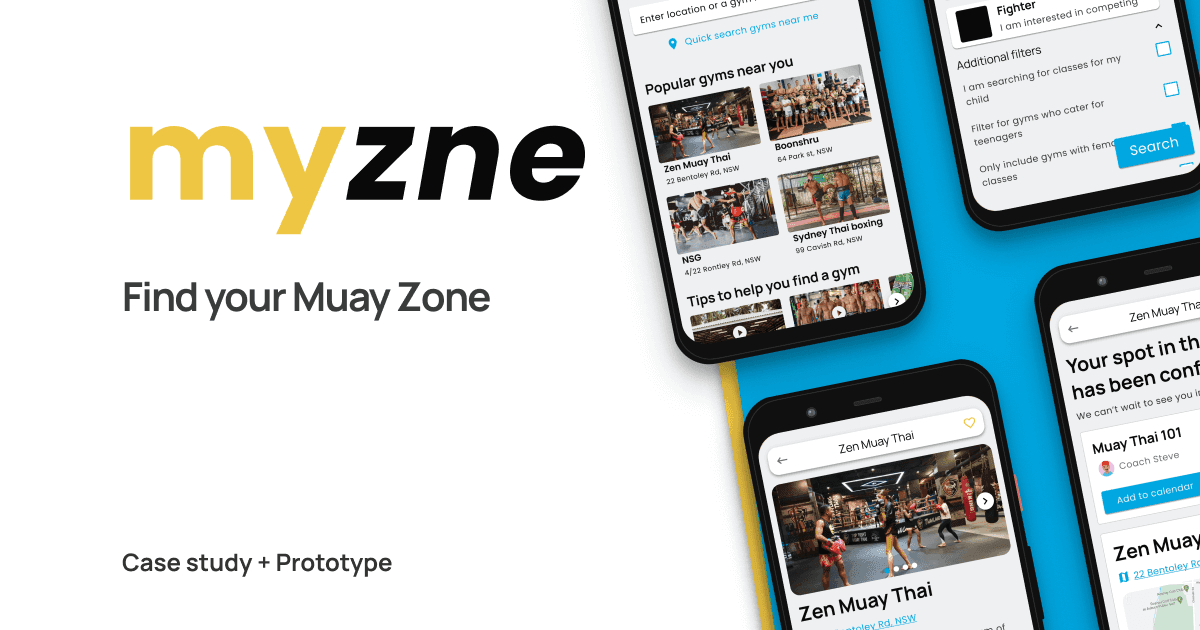
myzne
Design Thinking applied to an Athletes journey in Muay Thai
Client
Learning
Responsibilities
Conduct interviews, gather feedback from prototypes, iterate on UI.
Role
UX designer
Project time
2 months
Loading...

Learning
Conduct interviews, gather feedback from prototypes, iterate on UI.
UX designer
2 months